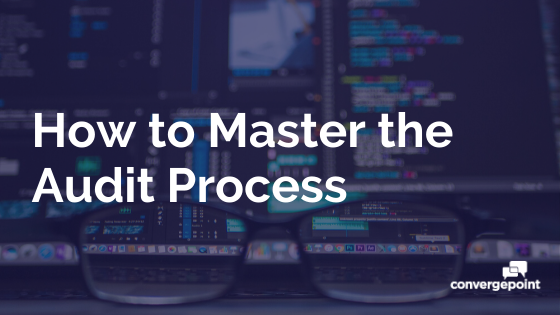How to Master the Audit Process

Audits are not always welcome, but they are inevitable. Organizations that use them to help identify inefficiencies and weaknesses will find that they can actually be a beneficial tool in their compliance arsenal.
However, before you go through an audit, make sure your organization has prepared an audit trail with all the data necessary to ensure a smooth process.
What to include in an audit trail
Audit trails provide data needed to backtrack through an entire series of events to the original creation of the record. An audit trail can consist of electronic records, paper records, or a combination. In order to provide a substantive foundation, a comprehensive trail should capture every:
- Data input – every reference and source for data within a document should be noted and attributed in the document.
- Decision – If a contract or policy included any back and forth chatter from its authors and approvers, that should be noted and attached to the document for audit purposes.
- Version – Most documents are written, reviewed, revised and approved before they are published or completed. Be certain to include a version history with every change noted for a comprehensive audit trail.
- Approval – Important documents published to the company intranet or used in business should always have an approval noted in writing. Ensure these approvals are kept with each document for a smooth audit process.
- Related email, forms and notes – Every document or conversation related to a given contract or policy or procedure paper should be kept with the document to ensure auditors obtain a clear picture of all the players and due diligence involved.
For compliance sake, it’s also important to monitor and control every action made. Input from all vested parties must be carefully recorded in case there are any questions at a later stage.
A little prep work goes a long way
It’s a good idea to call your auditor as you prepare for the audit process. Keep them on speed dial and reach out any time you run into an unusual situation or if an unusual transaction occurs. Your auditor can help you correct accounting treatment from the outset, saving you the hassle of correcting it post audit. Most auditors have a network of federal, state and local tax professionals who they can tap to further assist as needed, too.
Just as you’d rather nip potential issues in the bud before they become thorny accounting errors, you should also strive to complete reconciliations on a monthly or quarterly basis, not leaving the process until year-end.
While you prepare for an impending audit, it’s also a good time to evaluate your current compliance system. Are you taking advantage of the latest technology on the market, which could help you maintain accurate records and a comprehensive audit trail? It’s a good time to decide whether it makes sense to add a compliance solution into the budget. Doing so will help you operate more efficiently and will make audit preparation effortless in the future.
ConvergePoint offers comprehensive compliance software solutions for policy and procedure management, contract management, incident and safety management, and conflict of interest disclosures management. All solutions integrate seamlessly with Microsoft SharePoint and Office 365. Schedule a demo today.
Download Policy Management WhitePaper
Industries Served
Manufacturing and Retail Industry
Many manufacturing and retail companies have a decentralized business model with
Healthcare
The healthcare industry encompasses a wide range of facilities from hospital
Financial Services and Banking
Every organization in the financial service industry — whether a commercial bank,
Insurance and Employee Benefits
The insurance and employee benefits industry knows more than anyone else
Energy and Utilities
Navigating the increasingly complex regulatory requirements can be tough for
Transportation
Abide by FAA, DOT, FMCSA, FRA and FTA regulations, educate drivers and third party vendors on guidelines, and streamline overall compliance.